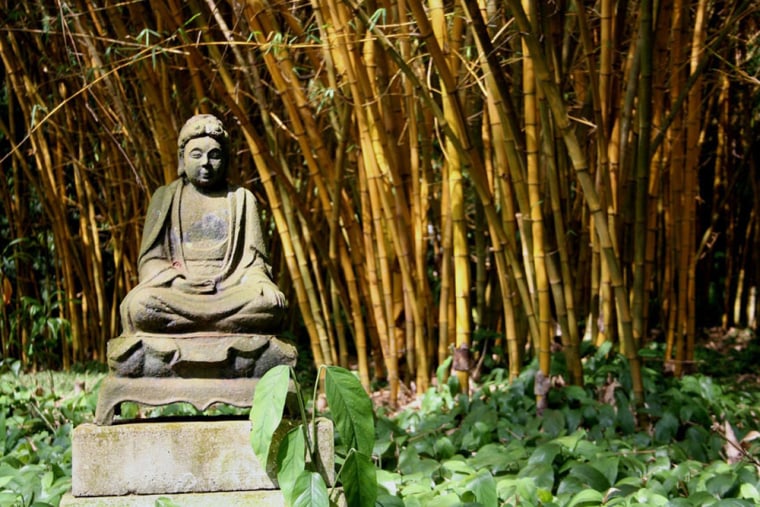The National Tropical Botanical Garden offers plenty of beautiful flowers, with three sites on Kauai, Hawaii's "Garden Isle." Here visitors can get off the beach and learn more about the local flora.
But one aspect of what takes place at the National Tropical Botanical Garden goes well beyond aesthetics. Resident scientists face the challenge of snatching the Pacific islands' quickly disappearing plants from the brink of extinction.
"Most of our visitors to Hawaii look at this beautiful, lush landscape and they just think, 'It's paradise'," said Charles R. "Chipper" Wichman, garden director, gesturing to the verdant valley stretching out below his office window on Kauai. "They have no idea that what they are viewing is a war zone between our native plants that are trying to hold on to a space and all these invasive plants and animals that are trying to take it away from them."
The Hawaiian islands have a wealth of conservation needs and are known among botanists as the nation's "extinction capital." About 180 plant species in Hawaii have 50 or fewer individuals living in the wild, Wichman said.
"We are facing an extinction crisis here in the Hawaiian Islands. And the plants here are part of our national heritage, part of the United States' national heritage," Wichman said.
Conservation at the garden involves locating and identifying endangered plants, raising them in green houses and then reintroducing them in the gardens and elsewhere to reconstruct native plant environments and bolster the health of the islands' many other troubled species.
At the National Tropical Botanical Garden's headquarters on Kauai's South Shore, the public can visit display gardens for free, or buy tickets and hop a tram for tours of the McBryde or Allerton gardens in a valley a couple miles away.
The McBryde Garden nurtures plants from throughout the tropics, some of which are extinct in the wild. Next door, the formal Allerton Garden was begun by Hawaii's Queen Emma in the late 1800s and transformed into its current design by a scion of a wealthy Chicago family who purchased the land in the late 1930s.
The third site, the Limahuli Garden on the lush North Shore, features many native species and stunning 700-year-old terraces for growing taro, known as lo'i kalo.
In addition to these three gardens on Kauai, the National Tropical Garden has two other botanical gardens and three preserves, all but one of which — The Kampong in southern Florida — are located in Hawaii.
Though created by an act of Congress in 1964, the garden does not get annual government funds and instead depends on private donations and grants from public and private foundations.
Among the garden's conservation and research triumphs is the alula, on display at both the McBryde and Limahuli gardens on Kauai. Similar in appearance to a cabbage on a stick, the cute, stocky little plant has been grown by the hundreds in the garden.
Triumphant as the alula's. The world's only known wild kanaloa, a humble-looking member of the pea family first scientifically described in 1994, lives on a sea stack off Kahoolawe, an uninhabited Hawaiian island still sprinkled with unexploded bombs after being used for target practice by the military for five decades.
Guided across the small island by people trained in ordnance detection, two of the garden's collectors spotted two of the unique plants on a tiny lump of offshore land topped by a piece of native vegetation that had been isolated for centuries from the human-introduced ravages of rats, grazing sheep, farming and bombs.
The collectors were able to gather samples of the plant after perilously lowering themselves down on ropes. Subsequent visits to the spot have been made by helicopter.
A lone example of this shrub grown from a seed is rooted in a tub, cordoned off from the public at the spot where the McBryde Garden and Allerton Garden meet. But so far researchers haven't found a way to produce any more of the enigmatic plant that ancient pollen records suggest was one of the dominant species here for a couple thousand years until the mid-1500s.
In all, the garden has had a hand in the discovery of 30 new species endemic to Hawaii and the rediscovery of about another 30 thought to be extinct.
But the garden has more in its sights on the research front than reproduction. It also has an Institute for Ethnomedicine through which the garden discovered, with the help of traditional Samoan healers, a potential anti-HIV drug currently in clinical trials.
If the drug proves to be marketable, the Samoan government as well as the village where it was found and the family of the healer who helped find it will get a good portion of the royalties, Wichman said.
"Our goal is to really try and set the standard for how to work with indigenous people and honor their intellectual property rights," he said.
